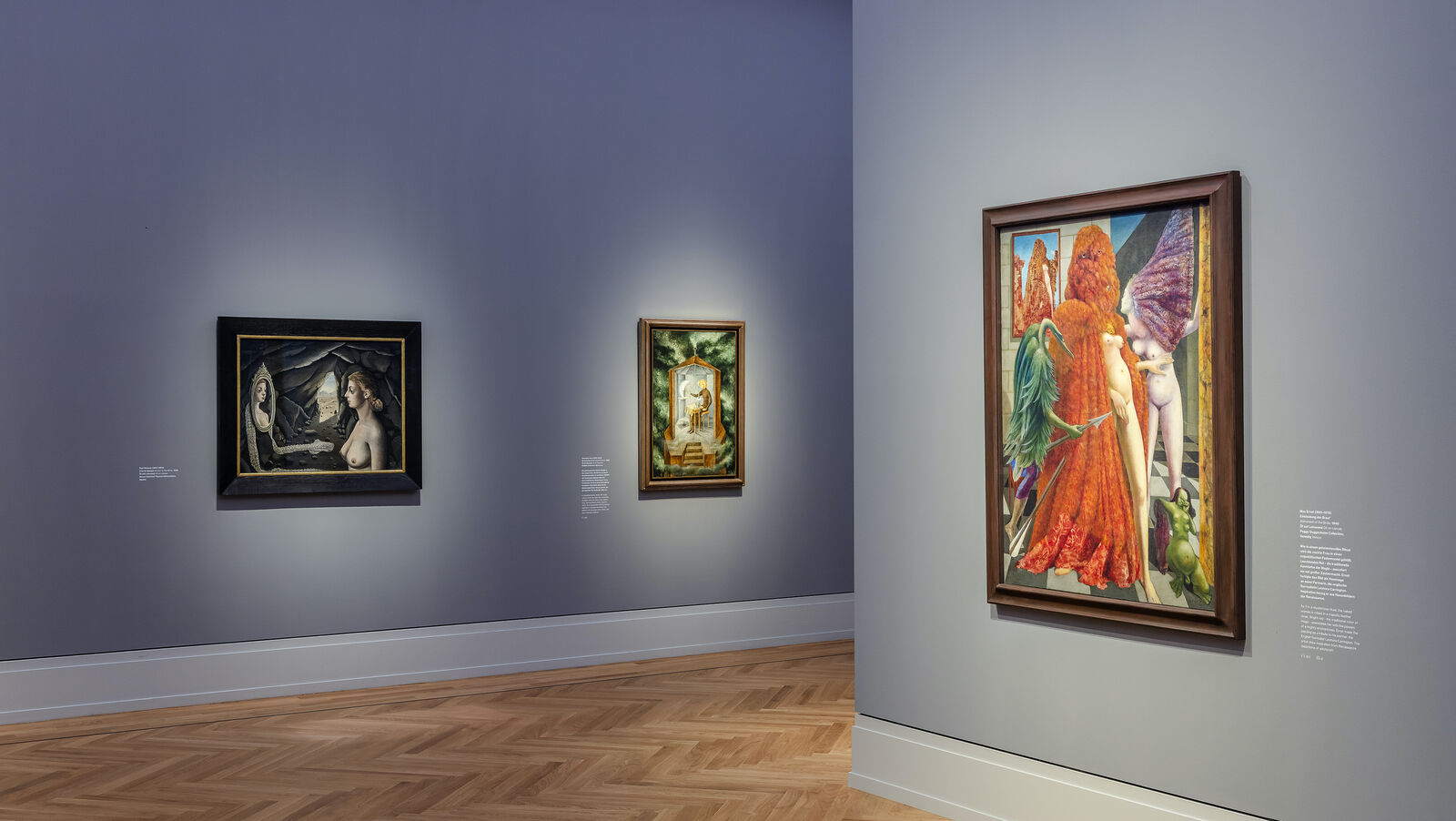
Surrealism is an intriguing art movement that emerged in the early 20th century. It is characterized by its dreamlike and fantastical imagery, challenging the boundaries of reality. Surrealism sought to unleash the power of the unconscious mind, tapping into the irrational and the unexpected. With its emphasis on the irrational, the bizarre, and the uncanny, Surrealism has captivated art enthusiasts and critics alike. In this article, we will explore 20 fascinating facts about Surrealism, shedding light on its origins, key figures, iconic artworks, and lasting impact on the art world. Let’s delve into the surreal realm of creativity and unlock the secrets behind this intriguing artistic movement.
Key Takeaways:
- Surrealism, an artistic movement from the 1920s, aimed to unlock the power of the unconscious mind and challenge societal norms through dreamlike and unconventional art forms.
- Surrealism’s influence extended beyond visual art, impacting literature, cinema, fashion, and more, and continues to inspire contemporary artists with its emphasis on imagination and freedom.
Surrealism emerged in the early 20th century.
Surrealism, an artistic and literary movement, first came into prominence in the 1920s. It aimed to unlock the power of the unconscious mind and explore the realm of dreams and the irrational.
Salvador Dalí was one of the most renowned Surrealist artists.
Dalí’s distinctive style and eccentric personality made him a prominent figure in the Surrealist movement. Known for his melting clocks and fantastical landscapes, his works continue to captivate audiences to this day.
André Breton was the founder of Surrealism.
Breton’s 1924 publication, “Manifesto of Surrealism,” laid the foundation for the movement. He believed in the power of the subconscious and sought to merge dreams and reality in his artistic and literary endeavors.
René Magritte’s paintings challenged reality.
Magritte’s thought-provoking artworks often depicted ordinary objects in unusual or absurd contexts. By playing with visual illusions, he aimed to challenge viewers’ preconceived notions of reality.
Surrealist poetry explored the irrational and unconventional.
The Surrealists embraced automatic writing, a technique where words and thoughts are written spontaneously without conscious control. This method allowed poets to tap into their subconscious and create unconventional and thought-provoking verses.
Surrealism had a major influence on cinema.
Filmmakers like Luis Buñuel and Salvador Dalí collaborated on the influential surrealist film “Un Chien Andalou” in The film shocked audiences with its provocative and dreamlike scenes.
The Exquisite Corpse was a popular Surrealist game.
This collaborative drawing game involved multiple artists taking turns adding to an artwork without knowing what the previous participants had drawn. The end result was often a bizarre and unexpected creation.
Surrealism aimed to liberate the human mind from rational constraints.
By delving into the realm of dreams and the subconscious, Surrealists sought to challenge societal norms and break free from rational thought. They believed in the power of imagination to transform the world.
Max Ernst pioneered the technique of frottage.
Ernst developed frottage by placing a sheet of paper over textured objects and then rubbing it with charcoal or pencil. This method created unpredictable and textured patterns, further exploring the idea of chance within Surrealist art.
Leonora Carrington’s work explored myth and mysticism.
Carrington’s paintings often featured fantastical creatures, merging elements of myth and mysticism. Her unique style and feminist perspective made her a trailblazer among Surrealist artists.
The Melting Watch is one of Dalí’s most famous works.
This iconic painting, titled “The Persistence of Memory,” features limp clocks draped over branches, symbolizing the fluidity of time. It has become a symbol of Surrealism and continues to inspire artists today.
Man Ray popularized the technique of solarization.
Solarization involves briefly exposing a partially developed photograph to light during the development process, resulting in a surreal and inverted effect. Man Ray’s experiments with solarization produced striking and unconventional images.
Surrealism influenced fashion and design.
The dreamlike and unconventional ideas of the Surrealists found their way into the fashion world. Designers like Elsa Schiaparelli incorporated Surrealist elements into their clothing, blurring the lines between art and fashion.
Joan Miró’s art celebrated spontaneity and childlike imagination.
Miró’s whimsical and colorful paintings often featured abstract forms and playful symbols. His work embraced a sense of spontaneity and tapped into the pure creativity of the inner child.
Surrealist artists often used juxtaposition to create meaning.
By combining seemingly unrelated objects or ideas, Surrealists sought to provoke new interpretations and challenge conventional thinking. This technique allowed for the creation of unexpected and thought-provoking artwork.
Surrealism extended beyond the visual arts.
While visual art is often associated with Surrealism, the movement also found expression in literature, music, theater, and even politics. Surrealist ideas influenced a wide range of creative disciplines and ideologies.
The Surrealist movement experienced a revival in the 1960s.
In the 1960s, a new wave of artists embraced Surrealism as a means of rebelling against societal norms and exploring alternative ways of thinking. This resurgence expanded the artistic boundaries of the movement once again.
Surrealism is characterized by unexpected and dreamlike imagery.
Whether it’s floating objects, distorted figures, or strange landscapes, Surrealist art often challenges our notions of reality and presents a fantastical and otherworldly experience for the viewer.
Magical realism shares similarities with Surrealism.
Magical realism, a literary genre that merges the real and the fantastical, bears similarities to Surrealism. Both seek to question reality and blur the boundaries between the rational and the irrational.
Surrealism continues to inspire contemporary artists.
The influence of Surrealism can be seen in the works of many artists today. Its emphasis on imagination, freedom, and the exploration of the subconscious continues to resonate with creators across different mediums.
Conclusion
In conclusion, surrealism is an artistic and literary movement that has left a lasting impact on the world. With its unique blend of dreamlike imagery, unexpected juxtapositions, and exploration of the subconscious mind, surrealism continues to captivate and challenge audiences.From its origins in Paris during the 1920s to its influence on various art forms, surrealism has pushed the boundaries of conventional artistic expression. It has inspired countless artists, writers, and thinkers to explore new realms of creativity and question the norms of society.Whether you’re a fan of Salvador Dalí’s melting clocks or a lover of René Magritte’s thought-provoking paintings, surrealism offers a fascinating journey into the depths of the human imagination.So the next time you encounter an artwork or piece of literature that leaves you feeling intrigued and perplexed, remember the 20 facts about surrealism and the impact it has had on the world. Embrace the nonsensical, the unexpected, and the surreal, and allow yourself to be transported to a realm where creativity knows no bounds.
FAQs
1. What is surrealism?
Surrealism is an artistic and literary movement that emerged in the 1920s, characterized by dreamlike imagery, unexpected juxtapositions, and exploration of the subconscious mind.
2. Who were some famous surrealists?
Famous surrealists include Salvador Dalí, René Magritte, Max Ernst, Joan Miró, and André Breton.
3. What are some key themes in surrealist art?
Key themes in surrealist art include the exploration of the subconscious mind, the juxtaposition of unlikely elements, and the challenge of societal norms.
4. How did surrealism influence other art forms?
Surrealism influenced literature, film, photography, and even fashion, challenging traditional approaches and encouraging the exploration of the irrational and the bizarre.
5. Is surrealism still relevant today?
Yes, surrealism continues to be relevant in contemporary art and culture. Its influence can be seen in various artistic movements and in the works of contemporary artists.
6. Can anyone appreciate surrealism?
Yes, anyone can appreciate surrealism. It invites viewers to embrace ambiguity, engage with their imagination, and explore alternative ways of thinking and seeing the world.
Surrealism's captivating world extends beyond these 20 facts. Delve deeper into the movement's intriguing history with 18 additional surrealism facts. Experience the whimsical performances of Cirque Surreal, a troupe that embodies surrealism's spirit. For a surreal cinematic journey, explore the bizarre and mind-bending facts surrounding David Cronenberg's avant-garde film, Naked Lunch. Each of these topics offers a unique glimpse into the surrealist realm, promising to challenge your perception of reality and ignite your imagination. Embrace the opportunity to uncover more of surrealism's fascinating secrets and let your mind wander through its dreamlike landscapes.
Was this page helpful?
Our commitment to delivering trustworthy and engaging content is at the heart of what we do. Each fact on our site is contributed by real users like you, bringing a wealth of diverse insights and information. To ensure the highest standards of accuracy and reliability, our dedicated editors meticulously review each submission. This process guarantees that the facts we share are not only fascinating but also credible. Trust in our commitment to quality and authenticity as you explore and learn with us.


